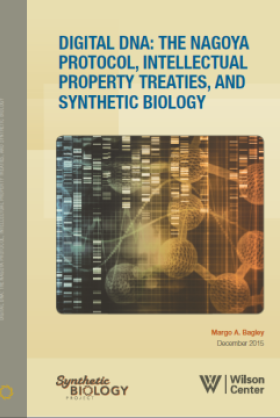Digital DNA: The Nagoya Protocol, Intellectual Property Treaties, and Synthetic Biology



The intellectual property, genetic resource prior informed consent, and access & benefit sharing landscape is currently in flux. The new laws and agreements being developed at the national and international levels could have implications for synthetic biology researchers.
Digital DNA: The Nagoya Protocol, Intellectual Property Treaties, and Synthetic Biology looks at current challenges for the intellectual property protection of synthetic biology outputs, implementation issues concerning the Nagoya Protocol on Access and Benefit Sharing to the Convention on Biological Diversity, and possible interactions between the requirements of the Protocol and the World Trade Organization’s Agreement on Trade Related Aspects of Intellectual Property (TRIPS).
The report also explores emerging concerns regarding synthetic biology and “digital biopiracy” in relation to non-commercial research projects. Finally, it presents highlights of negotiations in the World Intellectual Property Organization Intergovernmental Committee on Intellectual Property, Genetic Resources, Traditional Knowledge, and Folklore, which may relate to both the Nagoya Protocol and TRIPS and thus may be relevant for researchers, particularly those working in the area of synthetic biology.
The Synthetic Biology Project's 2013 report on the Nagoya Protocol can be found here.
A recording of the report release event can be found here.

The Science and Technology Innovation Program (STIP) serves as the bridge between technologists, policymakers, industry, and global stakeholders. Read more
